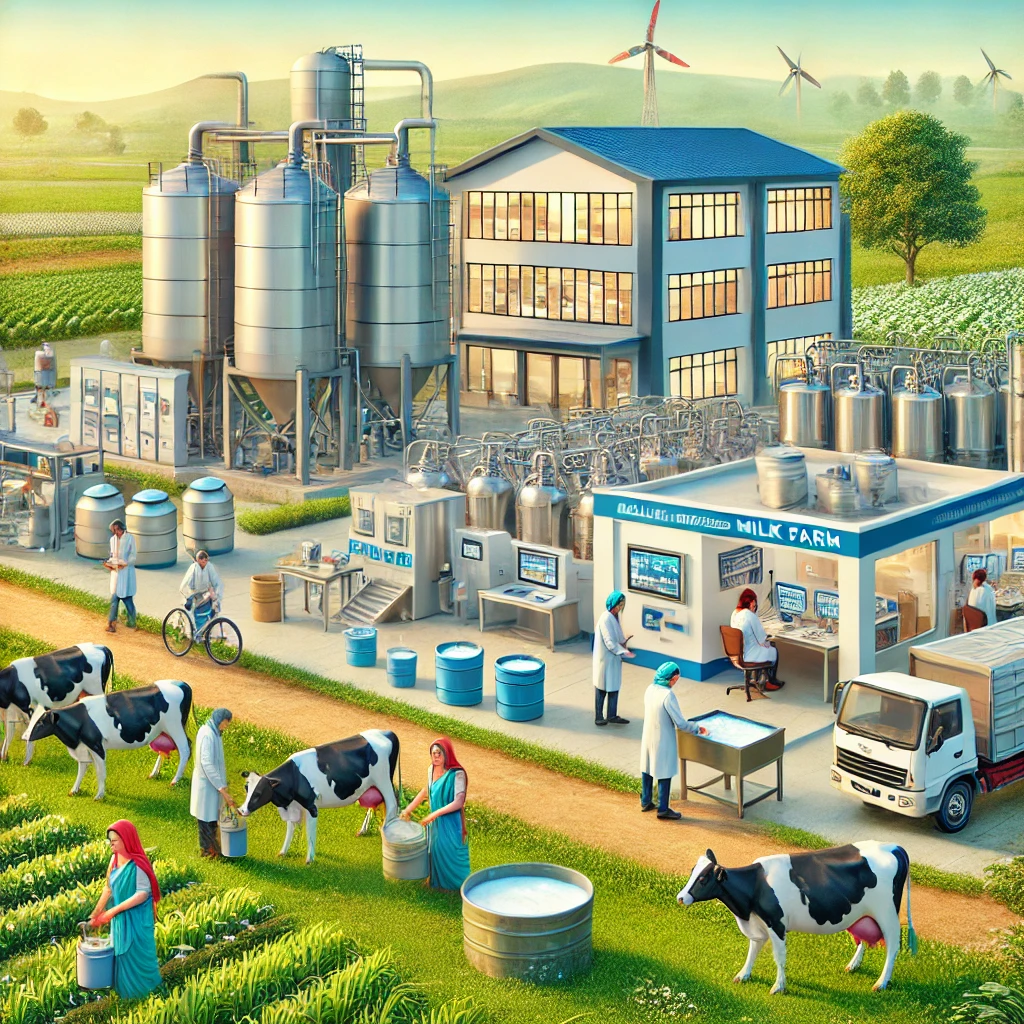Govt Approves Revised Rashtriya Gokul Mission to Strengthen India’s Livestock Sector and Boost Milk Production
This funding boost underscores the government’s commitment to enhancing dairy farming, improving indigenous cattle breeds, and ensuring greater productivity within the sector.

- Country:
- India
The Union Cabinet, chaired by Prime Minister Shri Narendra Modi, has approved the revised Rashtriya Gokul Mission (RGM), introducing significant enhancements aimed at accelerating growth in the livestock sector. This revised mission will be implemented as a Central Sector component under the Development Programmes scheme, with an additional outlay of Rs. 1000 crore, bringing the total allocation to Rs. 3400 crore for the 15th Finance Commission cycle spanning from 2021-22 to 2025-26. This funding boost underscores the government’s commitment to enhancing dairy farming, improving indigenous cattle breeds, and ensuring greater productivity within the sector.
New Additions to the Rashtriya Gokul Mission
As part of the mission’s expansion, two significant activities have been added to accelerate breed improvement and productivity enhancement:
- Establishment of Heifer Rearing Centres: A one-time assistance of 35% of the capital cost will be provided to implementing agencies for creating 30 housing facilities, collectively accommodating 15,000 heifers. This initiative aims to nurture young, high-yielding breeds and ensure better growth and health management.
- Support for High Genetic Merit (HGM) IVF Heifers: To encourage farmers to purchase high genetic merit in vitro fertilization (IVF) heifers, the government will provide a 3% interest subvention on loans taken from milk unions, financial institutions, or banks. This step will systemically introduce high-yielding breeds into the dairy farming system, ultimately improving milk production efficiency.
Continuation and Strengthening of Existing Activities
The revised RGM scheme will continue with the ongoing activities aimed at strengthening dairy farming and cattle breeding programs. The key components of the mission include:
- Strengthening of semen stations to ensure quality artificial insemination services.
- Expanding the artificial insemination network to enhance cattle breed improvement.
- Bull production programs to ensure high-quality breeding bulls.
- Implementation of the Accelerated Breed Improvement Programme using sex-sorted semen.
- Skill development and farmer awareness initiatives to educate and empower dairy farmers.
- Establishment of Centers of Excellence for research and development in cattle breeding and dairy farming.
- Strengthening of Central Cattle Breeding Farms to improve indigenous breed conservation and propagation.
- Introduction of innovative technologies, including genomic research and IVF advancements.
These measures will ensure sustained growth in India’s livestock sector and contribute to increased milk production and productivity.
Significant Achievements of the Rashtriya Gokul Mission
With the implementation of the Rashtriya Gokul Mission and other government-led initiatives, India has witnessed remarkable progress in the dairy sector over the last decade. Notable achievements include:
- Milk production has increased by 63.55% in the last ten years.
- Per capita milk availability has risen from 307 grams per day in 2013-14 to 471 grams per day in 2023-24.
- Overall productivity has improved by 26.34%, reflecting the success of breed improvement initiatives.
Additionally, the Nationwide Artificial Insemination Programme (NAIP) under RGM has been instrumental in expanding breed improvement efforts. The program offers free artificial insemination services at farmers’ doorsteps in 605 districts where artificial insemination (AI) coverage was previously below 50%. As of now, over 8.39 crore animals have been inseminated, benefitting 5.21 crore farmers across India.
Technological Advancements in Dairy Farming
The Rashtriya Gokul Mission has played a pioneering role in introducing cutting-edge technological interventions in cattle breeding and dairy farming. Some key innovations include:
-
In Vitro Fertilization (IVF) Expansion:
- A total of 22 IVF laboratories have been established across the country under State Livestock Boards (SLBs) and universities.
- More than 2,541 high genetic merit calves have been born through IVF technology.
-
Development of Indigenous Genomic Chips:
- Gau Chip and Mahish Chip, developed by the National Dairy Development Board (NDDB) and the ICAR National Bureau of Animal Genetic Resources (NBAGR), are genomic chips designed for indigenous bovine breeds.
- Gau Sort, an indigenously developed sex-sorted semen production technology, will further enhance breed improvement efforts.
Impact on Farmers and the Dairy Industry
The continued implementation of the Rashtriya Gokul Mission is expected to have far-reaching benefits, particularly for the 8.5 crore farmers engaged in dairy farming. The key anticipated outcomes include:
- Increase in farmers' income through enhanced milk productivity and quality.
- Improved availability of superior cattle breeds, leading to better milk yields.
- Strengthened indigenous breed conservation efforts, ensuring long-term sustainability.
- Boosting India’s self-sufficiency in milk production, supporting the broader vision of ‘Atmanirbhar Bharat’ (self-reliant India).
The government’s approval of the revised Rashtriya Gokul Mission reaffirms its commitment to strengthening India’s dairy sector, enhancing breed development, and improving the livelihoods of millions of dairy farmers. Through increased funding, cutting-edge technological interventions, and comprehensive support mechanisms, this initiative is set to propel India towards a more sustainable and prosperous livestock sector. The mission’s success will not only contribute to food security and nutritional needs but also establish India as a global leader in dairy production and cattle breeding.










